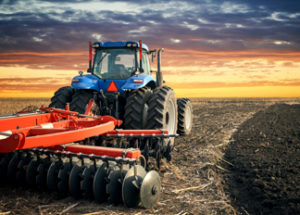
Manage Compaction during a busy Spring
With a wet Fall this past year and a long to-do list of field work to get done this Spring, the last thing farmers want is something else to think about. Taking the time to worry about compaction can directly affect the bottom line. Soil compaction occurs when soil particles and aggregates are compressed into a small volume, squeezing out air and water and losing natural soil structure. This is most likely to occur when field work (tillage, fertilizer application, spraying, etc.) is taking place when fields are saturated or near saturated.
An easy test to see if the field is too damp is to pinch a small amount of soil between your index finger and thumb. Observe the stability of the resulting soil ribbon, the more is holds together the wetter the soil is. Or try lightly squeeze soil into a ball in your hand and observing whether the soil breaks apart when you toss the ball into the air. If conditions are too wet, move on to another field or wait.
Compaction can have long term effects on soil structure leading to issues with
- water infiltration
- lack of aeration
- nutrient deficiencies due to reduced root penetration
- increased risk of diseases such as Soybean Sudden Death Syndrome.
Studies from Iowa State University show that this can affect yield up to 10-20% in some areas. Soil compaction is manageable with keen eyes and patience. Remember that field work done in poor conditions can do more harm to the pocketbook than 2 days on a calendar.
Tips to manage compaction
- Sidewall compaction can be a serious issue in corn with Anhydrous Ammonia applications and at planting time. Fields that are too damp with NH3 applications lose the ability to correctly seal. Sidewall compaction at planting time can severely restrict root growth leading to nutrient deficiencies, reduced water intake, stunted growth and yield loss. Wait to plant until fields have sufficiently dried.
- Use controlled traffic lanes for heavy loads such as grain carts, manure spreaders, etc, because the most severe damage occurs with the first pass of the implement. If possible, make more passes with loads that aren’t filled to capacity to reduce the total pressure put on the soil.
- Work with your equipment dealers to get the correct tire size and pressure for your equipment and load sizes. Larger tires help increase the footprint to lower the pressure on the soil surface.
- When deep tillage is necessary, proceed with the operation only when soil is dry enough to shatter instead of slide together
- Minimize tillage were possible to conserve natural soil structure
Talk with your Jacobsen Seed Representative about how to manage compaction concerns in 2019.
